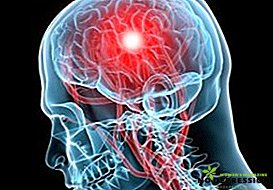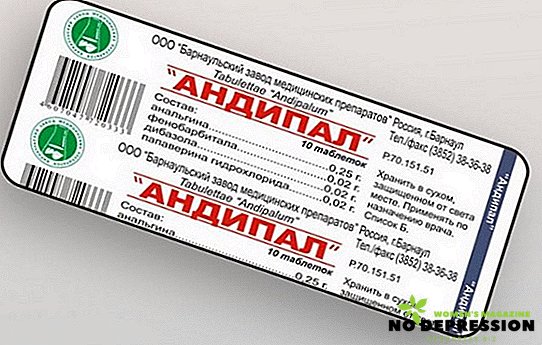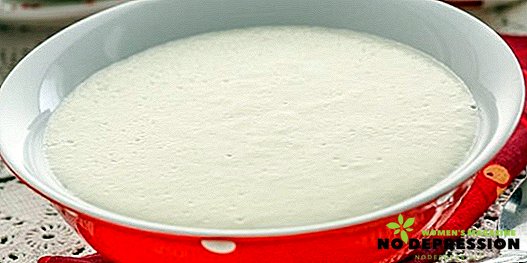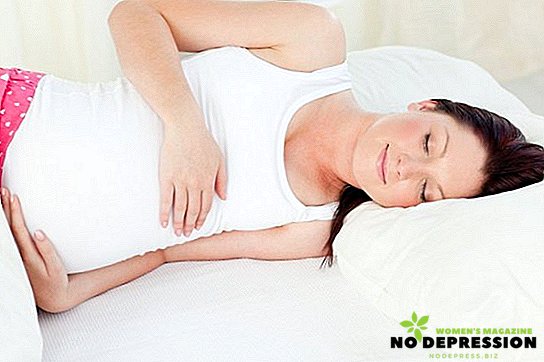Any occipital pain, be it dull, short, painful, shooting, gives the person discomfort. The causes of unpleasant sensations that do not allow you to fully relax, work, should be sought among the diseases that are associated with the most important systems of the body: vertebral, vascular and nervous.

Why does the back of the head hurt: causes and types of pain
In most cases, the systematic occurrence of occipital pain signals problems that occur in the vascular, nervous, or vertebral system. It may also indicate the appearance of a tumor or hematoma in this area.
Headache can be triggered by non-pathological factors, which include overstrain, meteorological dependence, an uncomfortable position in a dream, and so on.
Severe headache in the back of the head
Severe occipital pain indicates acute inflammatory processes that occur in this area. In addition, such sensations can develop in the presence of such diseases as:
- Neuralgia of the nerve, which is located in the occipital region. In this case, the pain is burning and paroxysmal, covers the entire area, can also spread to the neck, muscles of the upper back, the lower jaw. In most cases, pain develops from the inflamed nerve.
- Meningitis. Severe infection, which is accompanied by a severe headache, including the occipital part. Related symptoms of this disease include: high body temperature, vomiting, convulsions, unconsciousness in severe cases.
Headache and nausea
A common companion of headache is nausea, which can occur in the following cases:
 Concussion and other trauma head injury. In this case, the discomfort occurs after a traumatic impact on the head. It can also indicate the presence of hematomas, brain tissue injuries or intracranial hemorrhage, which create pressure on the brain centers and cause nausea.
Concussion and other trauma head injury. In this case, the discomfort occurs after a traumatic impact on the head. It can also indicate the presence of hematomas, brain tissue injuries or intracranial hemorrhage, which create pressure on the brain centers and cause nausea.- Tumors that are located in the nape area. In this case, the disease is characterized by almost persistent pain of dull nature. Nausea can occur due to the pressure of the tumor on the brain structure and the dangerous effects of cancer cells.
Throbbing pain
The main reasons for the appearance of such an unpleasant symptom include:
- Hypertension. In this case, the pain is pulsating, may be accompanied by dizziness, double vision. All these factors arise against the background of an increase in pressure, when blood flow cannot circulate normally through the vessels of the brain.
- Vascular spasms. A person may experience pulsation and pain of varying degrees of intensity in the case of vasospasm, which is located in the back of the head. Also, the pain can spread to the frontal and temporal parts. In a quiet state, the pulsation is most often moderate, but it may increase with movement.
Sharp headache
Such a symptom can be caused by such reasons as:
- Cervical myositis. In this case, the discomfort caused by inflammation of the neck muscles. The pain usually increases with movement, bending, but in a calm state it decreases.
- Cervical migraine. Arises in the form of sharp pains in the back of the head, often the result of cervical osteochondrosis. The pain may be accompanied by dizziness, nausea, vision problems, other signs of normal migraine.
- Subarachnoid hemorrhage. One of the most dangerous types of stroke. It is characterized by a sudden sharp pain in the back of the head, followed by the spread of an unpleasant feeling to other parts of the head. With this disease, urgent medical assistance is needed.
Constant headache in the neck
If the discomfort has become protracted or permanent, accompanied by other unpleasant symptoms, this may indicate:
- Cervical osteochondrosis. After bruises, during long-term work in a fixed position in the human vertebral system, the pathological deformation of the intervertebral disc tissue begins. As a result, the person almost always experiences pain in the head, stiffness in the neck.
- Cervical spondylosis. This is a disease in which bone growths that occur on the vertebrae under the influence of various factors begin to reduce the mobility of the neck, squeezing the vessels. This makes blood circulation more difficult. As a result, the person constantly feels dull headache, which may increase even with slight physical exertion.
Pain and dizziness
If the unpleasant feeling is additionally accompanied by dizziness, this may indicate the following diseases:
- Cervical osteochondrosis. With this pathology, the pain can be present almost constantly, and during the commission of active movements is usually complemented by dizziness. The cause of this disease is impaired blood circulation in the brain, which is caused by the squeezing of blood vessels.
- Arterial hypertension. With this disease, dizziness is a concomitant symptom.
- Cervical miogeloz. Pathology in which blood circulation is disturbed in the neck muscles, as a result of which seals appear. Additional symptoms include prolonged dizziness, stiffness in movement.
Why shoots in the back of the head?
Severe paroxysmal pain is often called "shooting." They can arise from hypothermia, exacerbation of chronic osteochondrosis. The pain usually increases with the movement of the neck and head, due to which the condition of the sick person worsens considerably.
If the pressure on the head
The reasons that lead to the occurrence of cruciate pressing pain include:
- Voltage. The pain appears with mental fatigue, being in an uncomfortable position for a long time, with frequent stressful situations and high blood pressure as a result. Often this is associated with a professional factor. For example, such an unpleasant feeling is often found among those who work in a sitting position: drivers, PC operators, office workers.
- Intracranial hypertension. In addition to feeling pressure on the occipital part, the patient may experience nausea, vomiting, dizziness, he may experience psycho-emotional disorders, convulsions.
Diagnosis and treatment
Systematically manifested pain is a symptom of a disease. Therefore, before embarking on treatment, it is necessary to undergo a thorough examination.
After the initial examination of therapists by a person who is experiencing occipital pain, the following types of studies may be prescribed:
- examination by a neurologist, oncologist;
- examination of the vertebral system using CT or MRI;
- encephalogram to assess the state of the vessels.
After passing the diagnosis to the patient, depending on the diagnosis, the following treatment can be prescribed:
 Medication. It is prescribed for the occurrence of acute inflammatory processes or for exacerbation of chronic pathologies. In hypertension or vascular pathologies, the patient is prescribed medications that normalize the condition of the blood vessels and improve blood circulation. If the nerve endings are inflamed or an acute infection is present, it is impossible to do without taking anti-inflammatory and analgesic drugs, in severe cases, antibiotics may be prescribed.
Medication. It is prescribed for the occurrence of acute inflammatory processes or for exacerbation of chronic pathologies. In hypertension or vascular pathologies, the patient is prescribed medications that normalize the condition of the blood vessels and improve blood circulation. If the nerve endings are inflamed or an acute infection is present, it is impossible to do without taking anti-inflammatory and analgesic drugs, in severe cases, antibiotics may be prescribed.- After the passage of drug therapy, the patient may be prescribed physiotherapy, for example, sessions of magnetic therapy, electrophoresis. These types of treatment are especially useful for osteochondrosis, nerve inflammation, cervical spondylosis, intracranial hypertension.
- Another effective method is physical therapy. It is prescribed for spinal injuries that can be caused by traumatic effects or age-related deformities.
- Manual therapy, acupuncture, folk remedies and other methods of alternative medicine are recommended for use, if a clear diagnosis is made and there is agreement with the following experts.
Folk remedy for headache
With small unpleasant sensations, such folk remedies can have a positive effect on the body:
- regular airing of the room;
- humidification of the air in the room;
- hot compresses on the back of the head and hot drinks;
- compress from cabbage leaf, chopped onion and grated horseradish;
- warm tea from linden flowers, a mixture of meadowsweet, sage, peppermint is also effective.
If you have headaches, it is recommended to exclude tobacco and alcoholic beverages, since they contribute to the strengthening of unpleasant symptoms. If the pain is caused by a professional factor, you need to adjust the workplace so that you are as comfortable as possible. For sleep, it is better to purchase an orthopedic pillow, since sleeping on it will help maximize muscle relaxation.


 Concussion and other trauma head injury. In this case, the discomfort occurs after a traumatic impact on the head. It can also indicate the presence of hematomas, brain tissue injuries or intracranial hemorrhage, which create pressure on the brain centers and cause nausea.
Concussion and other trauma head injury. In this case, the discomfort occurs after a traumatic impact on the head. It can also indicate the presence of hematomas, brain tissue injuries or intracranial hemorrhage, which create pressure on the brain centers and cause nausea. Medication. It is prescribed for the occurrence of acute inflammatory processes or for exacerbation of chronic pathologies. In hypertension or vascular pathologies, the patient is prescribed medications that normalize the condition of the blood vessels and improve blood circulation. If the nerve endings are inflamed or an acute infection is present, it is impossible to do without taking anti-inflammatory and analgesic drugs, in severe cases, antibiotics may be prescribed.
Medication. It is prescribed for the occurrence of acute inflammatory processes or for exacerbation of chronic pathologies. In hypertension or vascular pathologies, the patient is prescribed medications that normalize the condition of the blood vessels and improve blood circulation. If the nerve endings are inflamed or an acute infection is present, it is impossible to do without taking anti-inflammatory and analgesic drugs, in severe cases, antibiotics may be prescribed.









